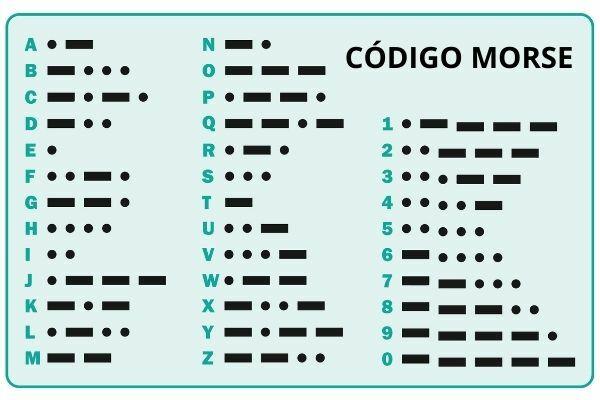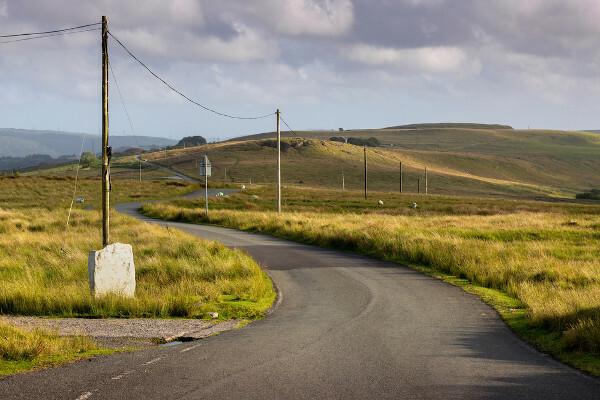THE Telegraph was a communication device invented in 1837 by a painter named Samuel Morse. used the electric current to send pulses that contained a message encoded in dots or lines. The code used in telegraph communication was called Morse code, also invented by the painter.
The Morse telegraph was only possible thanks to a series of studies in the field of electricity and failed attempts. This means of communication spread through the U.S and across all continents on the planet.
See too: Cell phone physics — the science and technology behind cell phones
Topics in this article
- 1 - Summary about telegraph
- 2 - What is the telegraph?
-
3 - Invention of the telegraph
- traffic light telegraph
- electric telegraph
- 4 - Telegraph in Brazil
telegraph summary
The telegraph was an equipment used in communication and capable of sending messages encoded by electric current.
The electric telegraph was invented by Samuel Morse in 1837.
The first telegraph was the semaphore, invented by Claude Chappe in 1792.
The code used in telegraph transmissions was also invented by Samuel Morse and was called Morse code.
The first telegraph in Brazil was installed in 1852.
Do not stop now... There's more after the ad ;)
What is the telegraph?
The telegraph was a equipment used for communication and which was very important in long-distance communication in the second half of the 19th century and in the first half of the 20th century. It was founded by a painter named Samuel Morse.
communication was performed by acode transmitted through electrical current. The code used in this equipment was also created by this painter, receiving the name of Morse code. The telegraph demanded that telegraphy stations be built, and these stations had to be connected by wires that carried the codes through the electric current.
The telegraph revolutionized communications and contributed to increasing the speed at which information was transmitted. As early as the 19th century, all inhabited continents on the planet had telegraphy stations and cables, including South America. The popularization of the telephone made this means of communication obsolete throughout the 20th century.
Know more: Television — the main means of communication created in the 20th century
invention of the telegraph
The invention of the electric telegraph was made by Samuel Morse and it was the realization of a long process that involved scientists and inventors from different parts of the planet, committed to to invent a means of communication that would allow sending messages over long distances in a more simplified way possible.
→ Traffic light telegraph
In Europe, the semaphore telegraph, also known as Chappe's telegraph, was widely used Thebefore the Morse telegraph. This device was created by Claude Chappe in France, in 1792, during the period of French Revolution, and was very common in the first half of the 19th century.
This device consisted of large poles built on top of towers positioned in high places, as they should be visible from long distances. On top of these posts were placed panels that were used to position codes that conveyed a specific message.
This message was transmitted from tower to tower until it reached its destination. In each such tower, an operator read the code from the previous tower and pass the message on for the operator of another tower to see it. This communication system had limitations, and messages were not transmitted at night or on foggy days.
Operators who were in these towers could see the messages on the panels, which were on top of the poles, through telescopes. This system seems obsolete, but it was quite efficient, and Professor Peter Schulz points out that a message with 36 symbols could be transmitted from Paris to Lille (about 230 kilometers away) in 32 minutes.|1|
→ Electric telegraph

The invention of the electric telegraph in the 1830s made this earlier model (the traffic light) fall into disuse. This invention was a process that extended by first four decades of the 19th century. It was only after many studies and many failed attempts that a model proved to be viable.
The first studies on the use of electrical energy to send messages originated in the 18th century, with a system that used 26 copper wires to indicate the 26 letters of the alphabet. The wire that the electric current passed indicated the letter in the message, but this system was not practical and did not work.
Other models were proposed by different scientists and inventors, but none of them were commercially established, mostly because they had very complex operating systems. According to Peter Schulz, in all, there were nine distinct telegraph prototypes and models before Samuel Morse's invention.|1|
Samuel Finley Breese Morse was born on April 27, 1791, in the state of Massachusetts, United States. Morse had access to a good education and studied at Yale University, where he developed a keen interest in electricity. He worked professionally as a painter, but abandoned the craft to dedicate himself to the manufacture of a telegraph.
Samuel Morse, most likely, used the body of knowledge acquired in the failed attempts to develop the telegraph. He created a model in which an operator useslaugh a switch that closeslaugh a electric circuit when triggered. This would generate pulses of electrical current that were sent over the transmission network and intercepted by another transmission station.
Transmission by means of the telegraph invented by Samuel Morse meant that a coded message was recorded on paper. Therefore, The message was automatically recorded in a code of dashes and dots. This code was given the name Morse code, as it was also invented by Samuel Morse.
In this code, a combination of dots and lines represented letters, and the telegraph recorded all combinations, and the operator's job was to decode the message. The first demonstration of the telegraph invented by Samuel Morse was made by him in 1837 in New Jersey. The success of the demonstration led Morse to patent his invention.
In late 1842, Samuel Morse received authorization from the US Congress to build the first telegraph line in the United States. This line would connect Washington, the nation's capital, to Baltimore and was 40 miles (about 64 km) long. In 1844, Morse himself sent the first official telegram, and his message was as follows: “What hath God wrought!” (“What a work God has done!”).
Soon the telegraph spread across the United States, and telegraph lines were built up to the west coast. The first telegraph station on the west coast was built in San Francisco, California and opened in 1866. A short time later, the first telegraph line connecting Europe and the United States was completed in 1866.
The telegraph was a reasonably expensive means of communication, and it was billed by letter. Therefore, it has become common for words to be abbreviated as a way to speed up communication and make messages cheaper. It was a very important means of communication in the transmission of messages, but became obsolete in the world with the popularization of the telephone throughout the twentieth century.
Telegraph in Brazil
the telegraph arrived in Brazil in the 1850s and was part of a project to d. Pedro IIto modernize the country. Its installation aimed, naturally, to guarantee greater ease and speed in communication in the country, and it is estimated that, over 20 years, the empire was responsible for the construction of 182 telegraphy.|2|

The first telegraph line in the country was only 4300 meters long., connecting Quinta da Boa Vista to Campo de Santana, in Rio de Janeiro. This line had the objective of speeding up information and issuing orders in the fight against the slave trade, prohibited since 1850 by the Eusébio de Queiros Law.
With the development of this means of communication in the country and the extension of an intercontinental cable that connected Europe and North America, the Emperor sought to ensure Brazil's intercontinental connection. In this project, a submarine cable was extended that connected Pernambuco to the For and another cable that connected Brazil to Cape Green and the Portugal.
Grades
|1| SCHULZ, Peter. Who invented the telegraph? Left-Right-Right, Right, Left-Right… To access, click on here.
|2| 168 years ago, the first telegraph line in Brazil was inaugurated. To access, click on here.
by Daniel Neves
History teacher


